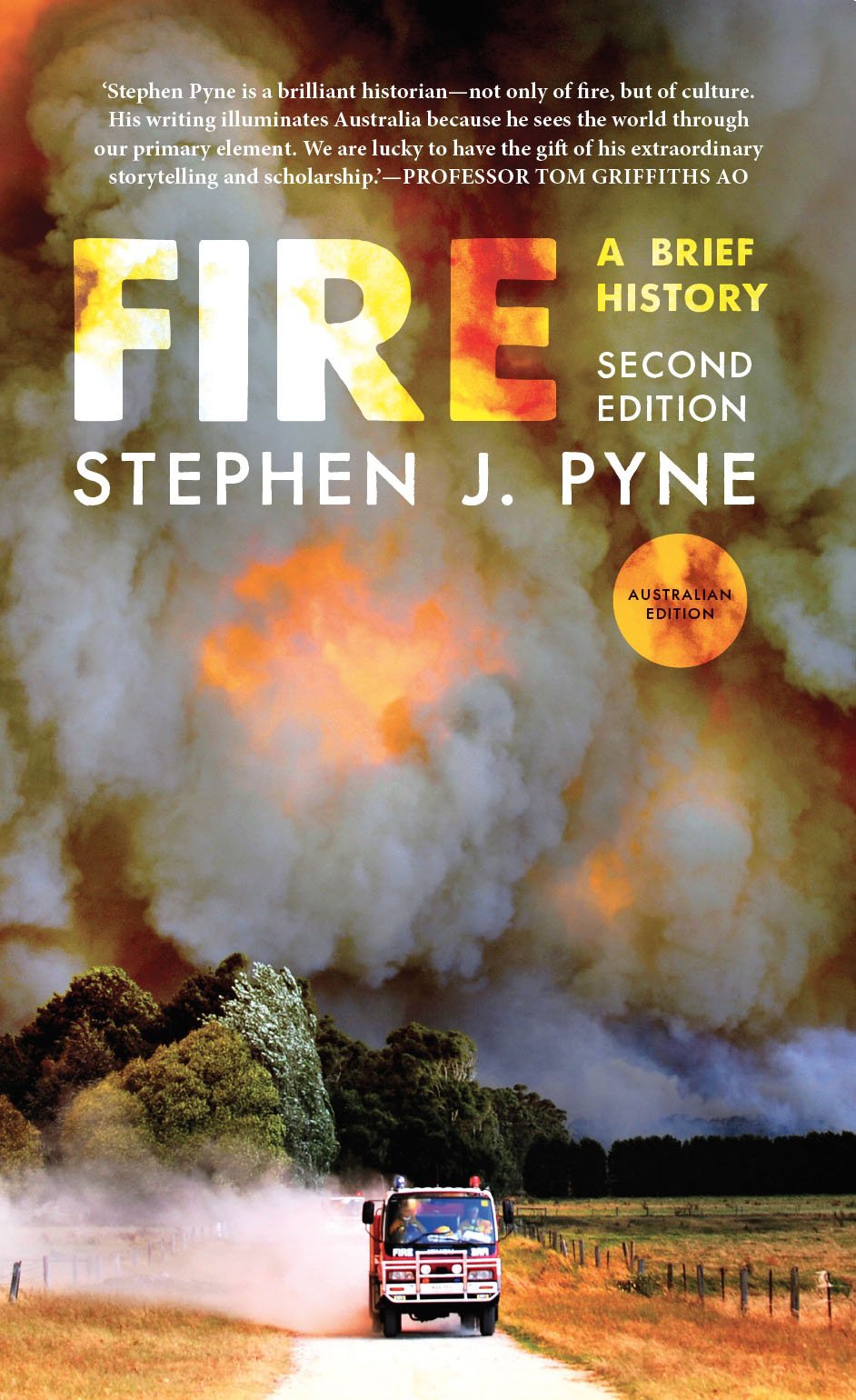Why fire?
The Earth is a uniquely fire planet – the only one we know of. Since plants first colonised the continents, they have burned. Similarly, humans are a uniquely fire creature, the only one with the capacity to manipulate fire. We’ve had it as long as we have existed and now hold a monopoly over its use. Fire makes a marvelous marker for how people and planet have interacted.
Fire and humanity early made a pact to expand each other’s realms. People have taken fire to every terrestrial landscape on Earth; fire has powered humanity’s expansion and even taken us off world. We got small guts and big heads by cooking food; we went to the top of the food chain by cooking landscapes; now we have become a geologic force by cooking the planet. The question, perhaps the central question of our time, is whether the relationship between humans and fire is a mutual-assistance pact or a Faustian bargain.
The new era began when, at the onset of our current interglacial, a fire-wielding creature met a fire-receptive environment. Aboriginal fire economies depend on control over ignition – the timing and placement of sparks. Agricultural economies add control over fuels – the capacity to slash, drain, relocate, loose livestock, and otherwise make more combustibles. All these activities burn within living landscapes, which means they come with baffles and barriers that limit how much can be burned without degrading the landscape.
Industrial combustion, the burning of fossil biomass – call it lithic landscapes - changed those dynamics. It became possible to burn day and night, summer and winter, through wet and dry. The sources available to burn are essentially unbounded; the issue is the sinks, where to put all the effluent. We are taking stuff out of the geologic past, burning it in complex ways in the present, and releasing its byproducts to the geologic future.
The dialectic between the burning of living and lithic landscapes is affecting the atmosphere, the oceans, and the biosphere. Climate change is the most widely recognised consequence, but the ‘pyric transition’ to fossil fuels had unsettled historic fire regimes well before anthropogenic climate change became unmistakable. The Earth’s keystone species for fire changed how it did business and that choice cascaded throughout the biosphere.
Unfortunately, apart from climate and ocean acidification, the process has not been systematically studied. And the way in which so many of humanity’s environmental habits trace back to fire has not been recognised; even climate change is now a subnarrative of fire history. The power source behind the Anthropocene has been humanity’s fire practices. A primary task of Fire: A Brief History is to identify and arrange these practices and show their consequences.
Add up all these fire practices and the outcome resembles the fire equivalent of an ice age. Instead of ice sheets there are fire-informed biotas; in place of outwash plains, mega smoke palls. Fire-famished landscapes. A rise in sea level. A mass extinction. Every relic of the Pleistocene ice is being purged. Practically every feature of the ice ages can be mapped – as through passed through a looking-glass – onto our emerging fire age. What began as an interglacial looks likely to end the cycling of ice altogether. The Pleistocene is seguing into a Pyrocene.
The revised Fire: A Brief History begins with nature’s fire, then tracks humanity’s capture and use of fire in its many manifestations, from nature preserves to cities, from pyrotechnologies to ceremonies. A new chapter updates events and information, explores the curious omission of fire as a subject for scholarship, and introduces the concept of the Pyrocene. A new preface places Australia within this fast-morphing epoch.
Australia is a firepower not just because it has plenty of fires, some of world-class savagery, but because it demonstrates a cultural engagement with fire unparalleled within the developed world. It has fire art, fire literature, fire science, even a fire politics – what other country has had the equivalent of four royal commissions on bushfire over the past century? As a global survey, Fire can help explain not only why fire matters in Australia but how the present fire globe has evolved.
Observers of our current environmental moment often lament that the future is so dire and strange that no narrative exists by which to join what is coming to what has passed and that no analogues exist by which to frame that perilous future. In reply, Fire: A Brief History demonstrates that we have a marvelous narrative in the epic of humanity and fire and that we have an apt analogue in the Pyrocene, the fire-informed equivalent of an ice age.
The covid-19 epidemic will pass. We will be living with fire forever.
Stephen J Pyne's book Fire: A Brief History, Second Edition, Australian Edition will be published by NewSouth in August 2020.



